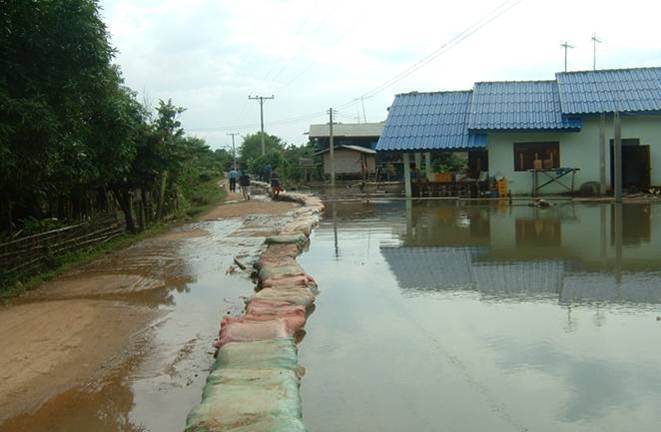Flood Hazard Mapping using HEC-RAS, Remote Sensing and GIS: A Case Study of Xe Champhone River in Savannakhet Province, Lao PDR
Descriptions
The objectives of this project were: 1) To develop flood hazard map using satellite data, river discharge data and a hydraulic, 2) To develop a high resolution DEM using ALOS/PRISM data, 3) To prepare vulnerability maps for a 10, 20 and 50 year flood event.
The study area of this project was Xe Champhone river basin in Savannakhet province. Flood hazard maps of the study area were achieved for 10, 20 and 50 years flood using 1D hydraulic model HEC-RAS. ALOS/PRISM was used to create DEM, whereas Landsat-ETM data was used for landuse classification. After the frequency analysis of the hydrologic data, discharges for the corresponding return periods were determined and used as inputs to the HEC-RAS model along with the TIN (Triangulated Irregular Network) generated from the DEM for estimating the flood extent and flood depth. Necessary Manning’s roughness coefficients for the HEC-RAS model was achieved from the landuse map prepared from the Landsat-ETM data. Vulnerability analysis was carried out for a 10 year return period. The results indicated a total area of 629, 646 and 668 km2 inundated for 10, 20 and 50 year flood respectively in the four districts of Atsaphang, Champhone, Xonbuly and Songkhone in the Savannakhet Province. A total of 179, 414 and 433 km2 of land was under flood depth of 6m or more for the respective return periods. It was found that about 88% of the area was under low, 10% was under medium, and the rest fell under high or very high vulnerable categories. In the flooded area, 196 and 66 km2 were agriculture lands and forests areas respectively. The scope of ALOS data utilization can further be extended to the whole basin.

